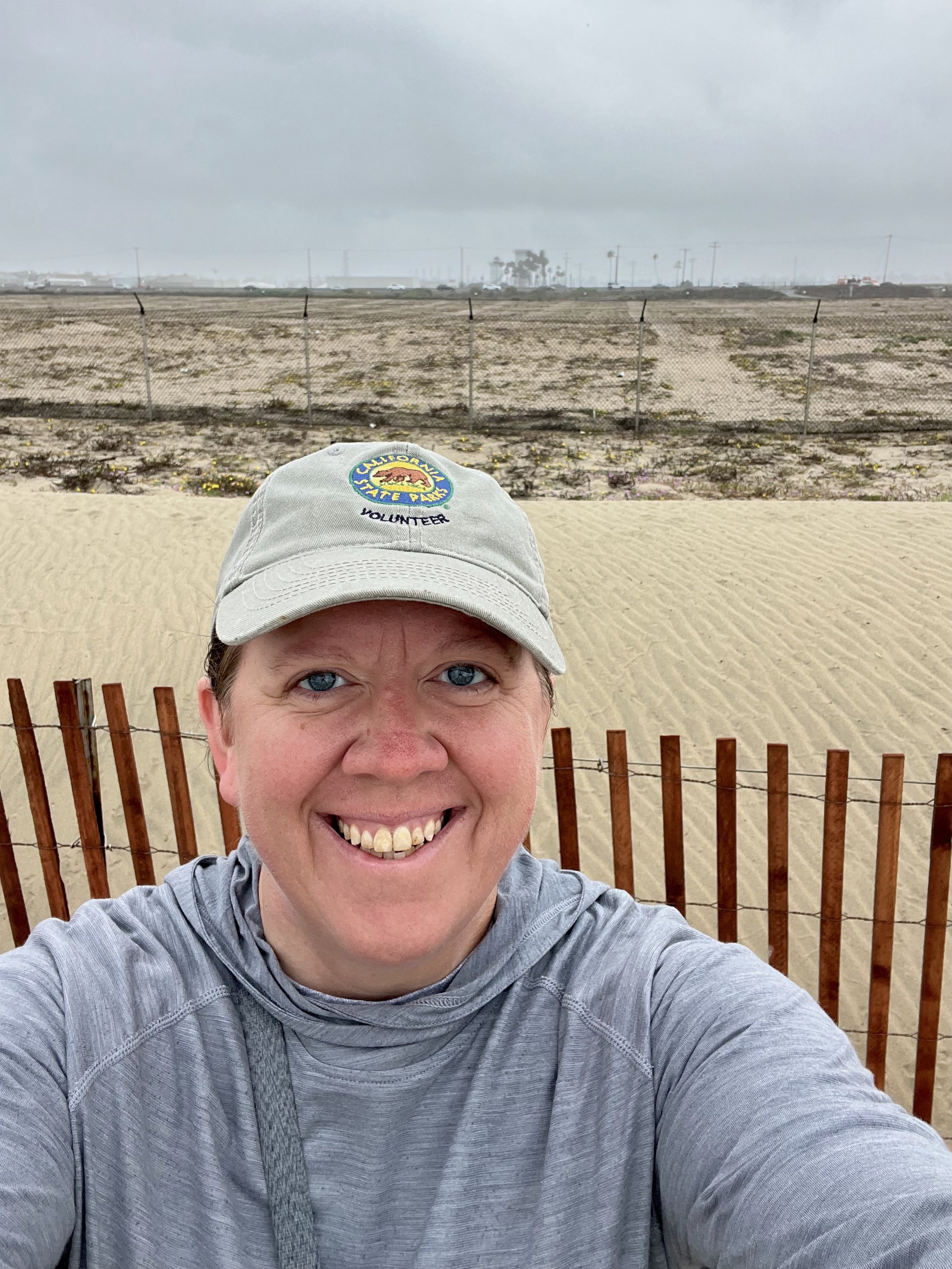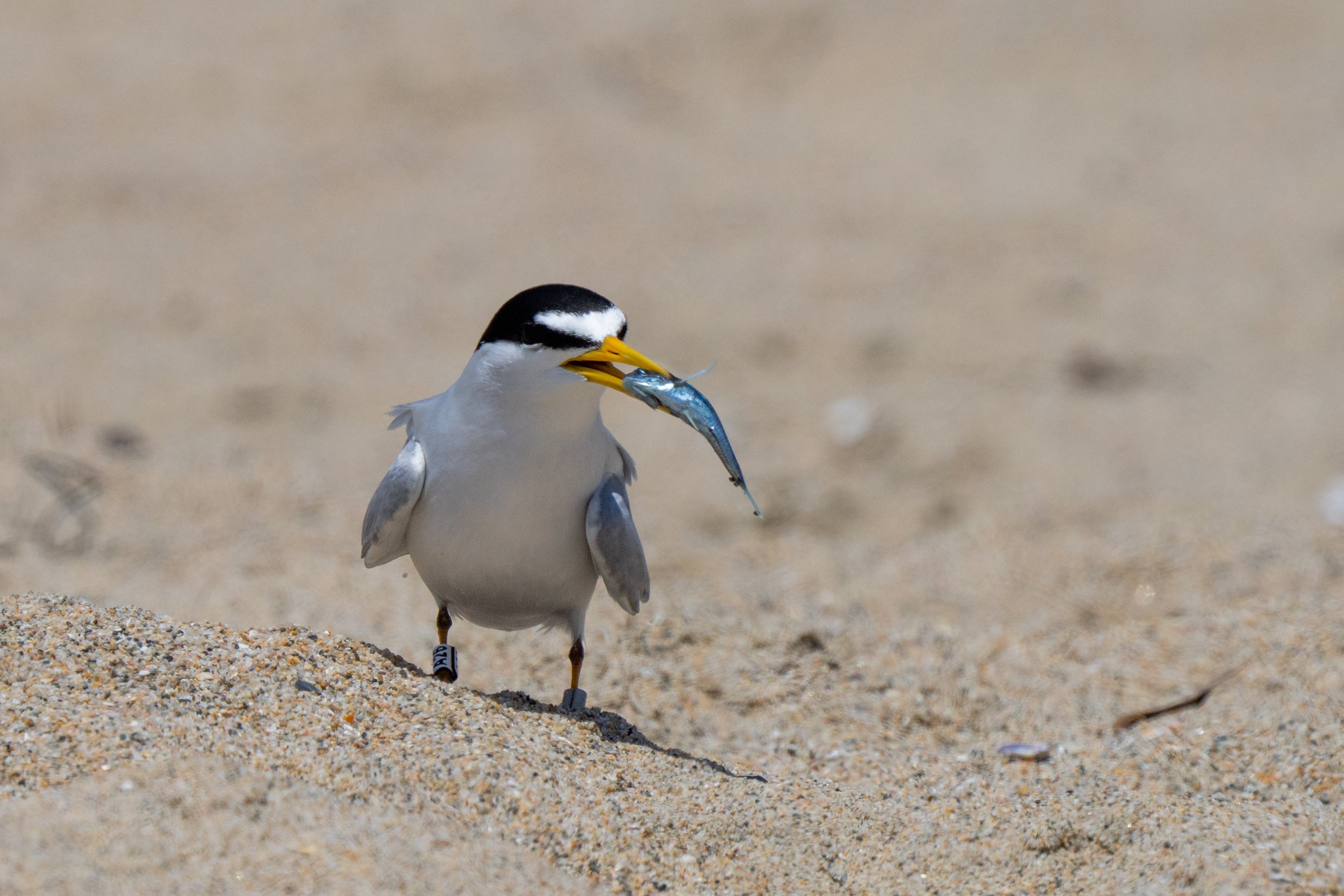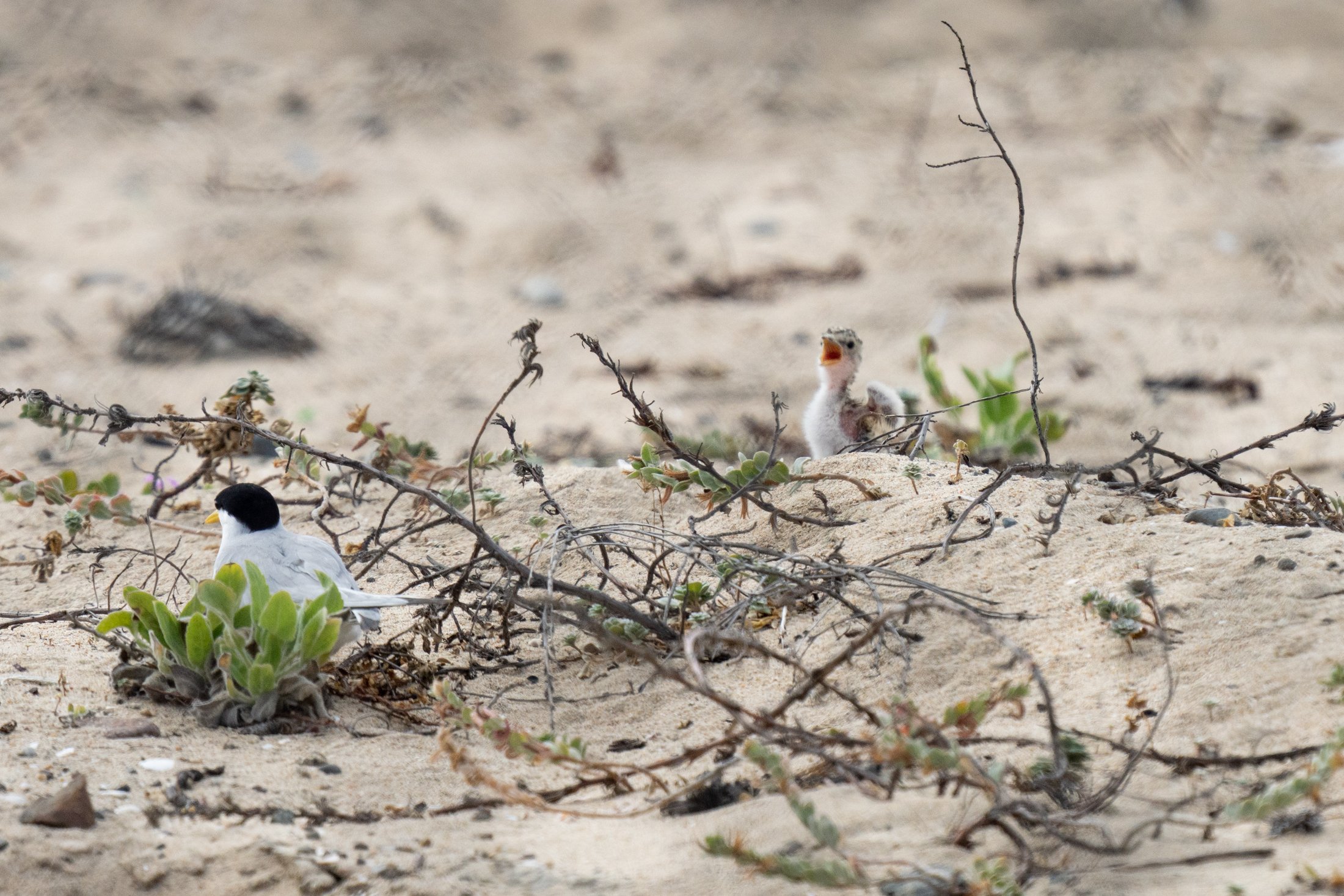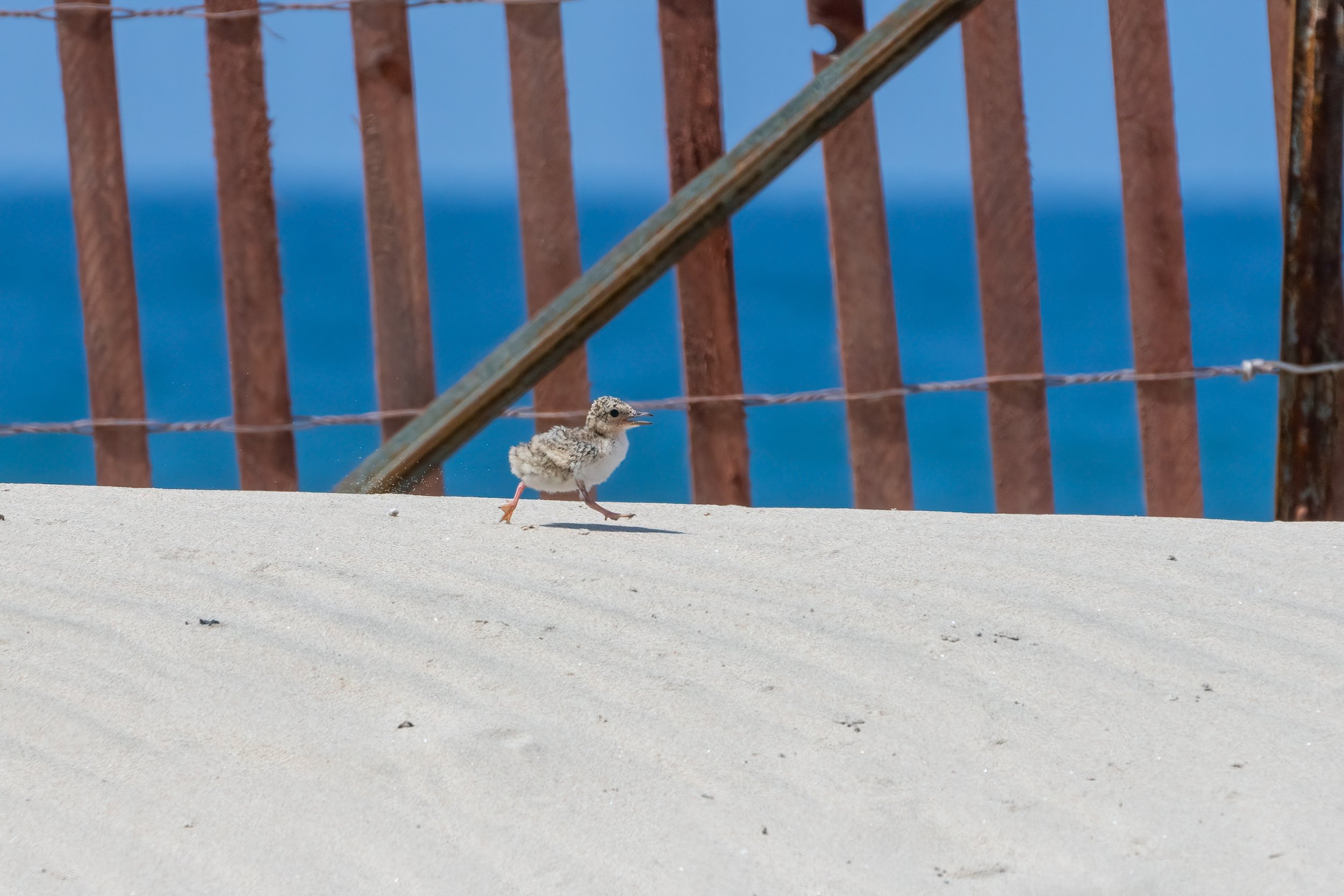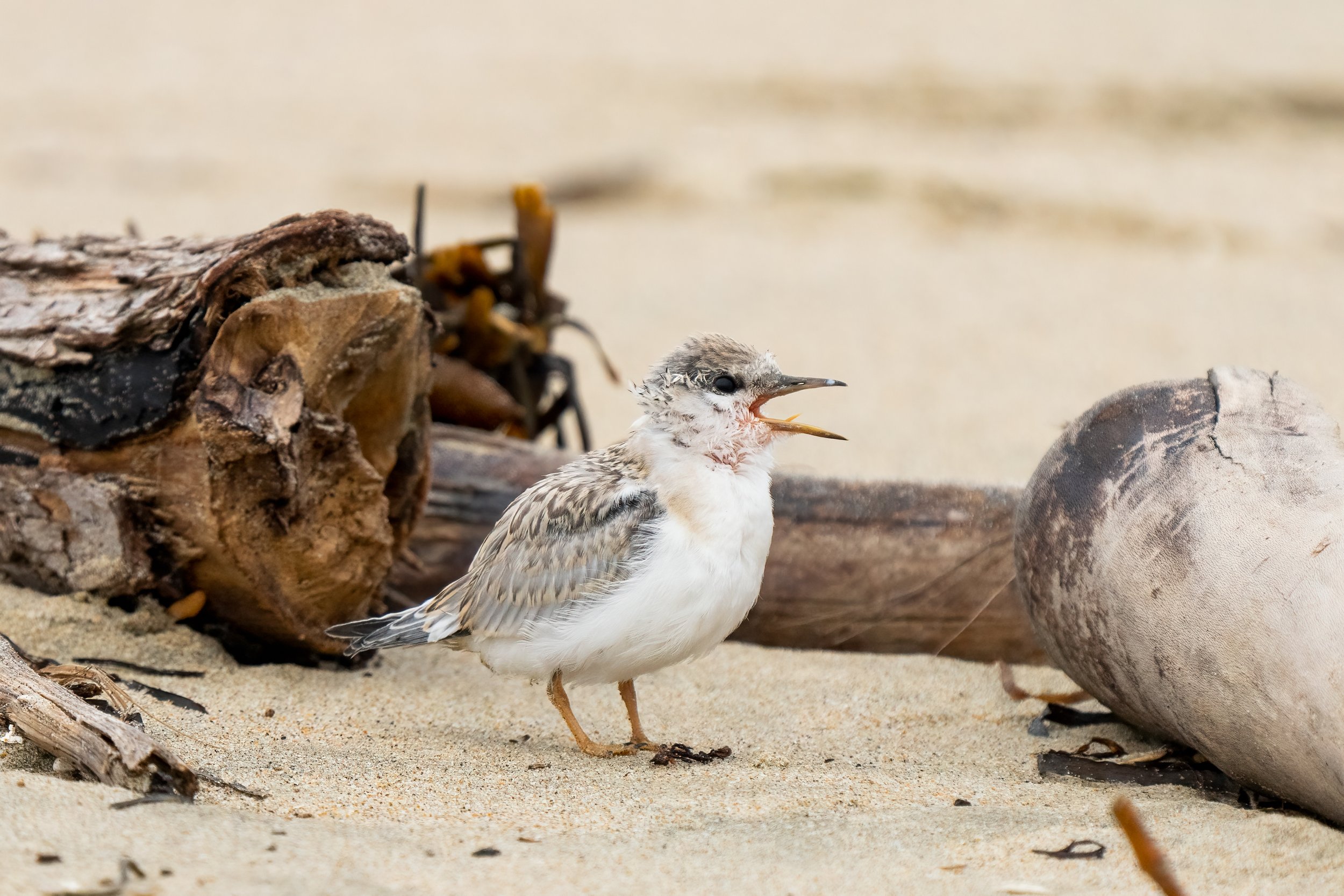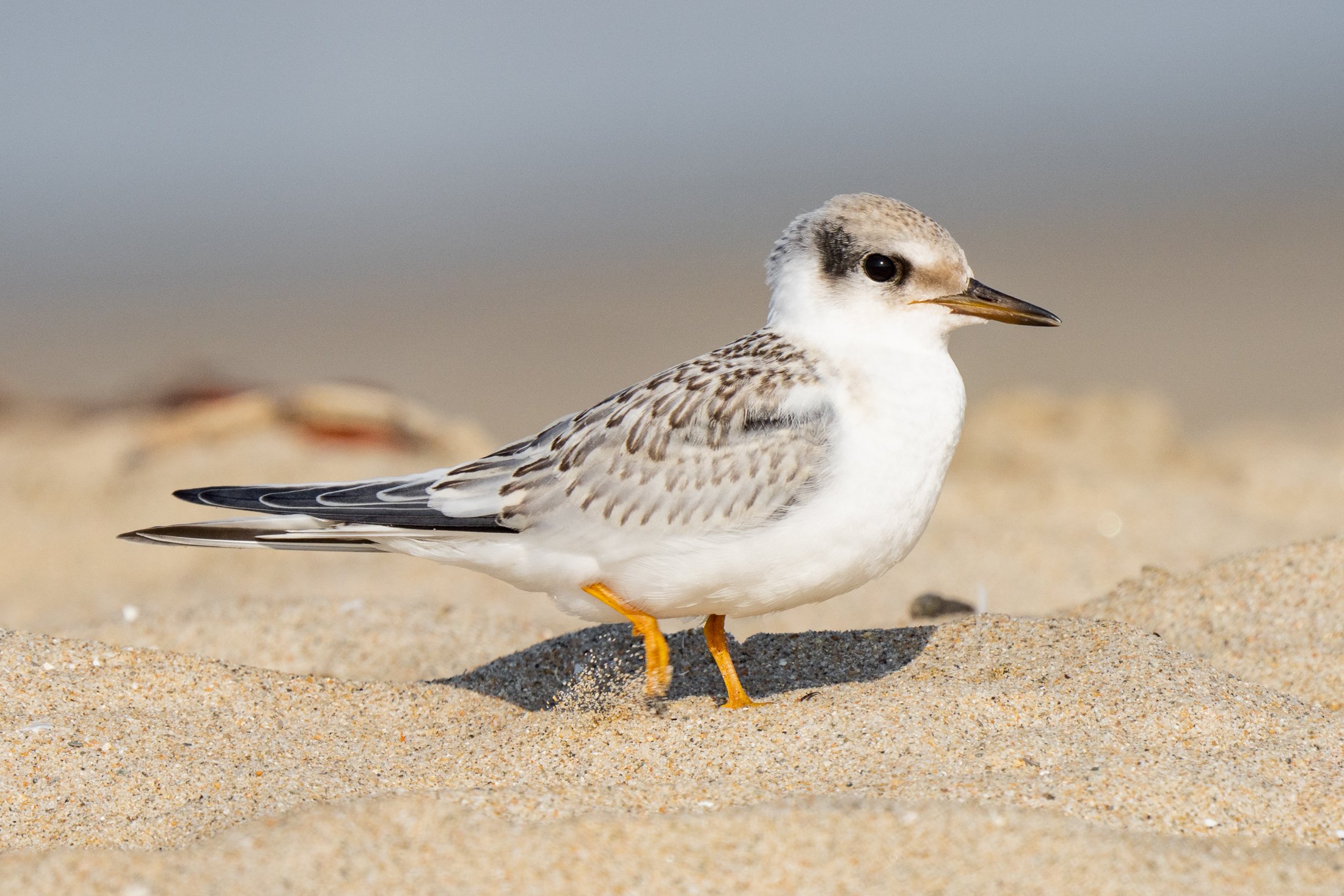California Least Terns: Protecting Our Smallest Tern Species
The California Least Tern is a small seabird that is endemic (native) to the Pacific Coast of North America. These birds have distinctive black caps on their heads and brilliant white underparts, making them easy to spot. Their forehead is white, which gives them a bit of a “headlight” look, in my opinion! They are the smallest (and cutest?!), but no less fierce than a tiny tern needs to be!
They are incredibly adorable, mostly because they have huge personalities in a tiny little bird's body. They are often very sassy - squeaking and flying in highly acrobatic styles. They fly fast, with rapid wingbeats, and sometimes hover over water waiting for a fish to catch! They dive into the ocean to catch small fish, then fly around with the fish in their bill. They may eat the fish they caught, or fly around until they find a mate to offer it to. They also bring in small fish for their chicks!
California least terns can have such playful interactions with each other especially when engaging in courtship displays and aerial acrobatics during the breeding season. Their high-pitched calls and intricate mating rituals create a lively atmosphere that is so much fun to watch!
They are highly territorial and prefer to nest on sandy beaches or islands close to the shore. Unfortunately, due to habitat loss and disturbance caused by human activities, the population of California least terns has declined greatly. They were listed as an endangered species in 1970 and still face the same and growing threats today.
Conservation efforts, including habitat restoration and protection, the creation of protected breeding sites, predator control, and public education, have helped in the recovery of this bird species. These birds come to Southern California beaches every summer! They put on an impressive flight show, breed, nest, and raise their chicks here. They are usually gone from our beaches by summer end, after a whirlwind of a nesting season.
Every year, conservationists and biologists work diligently to band California least terns for research and protection purposes. By banding (or ringing, tagging) these endangered seabirds, biologists can monitor their movements and population trends more effectively. Banding plays a crucial role in the ongoing conservation and management of California least terns, contributing to their long-term survival.
Side note: If you see a tern (or any bird) with a band or ring around their leg(s), please report it! You often get interesting information about the bird you saw, but it also helps scientists to know where these banded birds go! You can report any band you find here.
I volunteer with California State Parks to monitor these birds. The Least Tern Natural Preserve at Huntington State Beach is an almost 12-acre protected (fenced) habitat that these birds use for nesting each year. Teams help protect these birds by conducting field surveys - monitoring their behavior, reporting nests and chicks, reporting predators or disturbances, and interacting with the public to educate and inform them about the birds and conservation efforts. This is the best volunteering gig I’ve ever done. I thoroughly enjoy my time on the beach with these birds, knowing that I’m making a difference for them and just enjoying them!
If you encounter a California least tern on our sandy beaches, I’m sure it will bring a smile to your face. While you’re enjoying the beaches, please do your best to protect the birds. Don’t take your dog to these protected beaches, never fly a drone near seabirds (especially nesting colonies), and pick up any trash you bring (or see along the way). Trash on the beach attracts predators like crows and gulls, who attack the endangered chicks of these birds and more. Keeping the beach clean directly keeps the chicks safe!
If you are a photographer, remember to give these birds a lot of space. Any photos I have are taken with an appropriate distance between me and the bird, with a long zoom lens, and cropped!
So tell me - have you ever seen one of these adorable California least terns? Or other terns? They are one of my favorite birds, and species of bird altogether, so I’d love to hear about your experiences with them!

